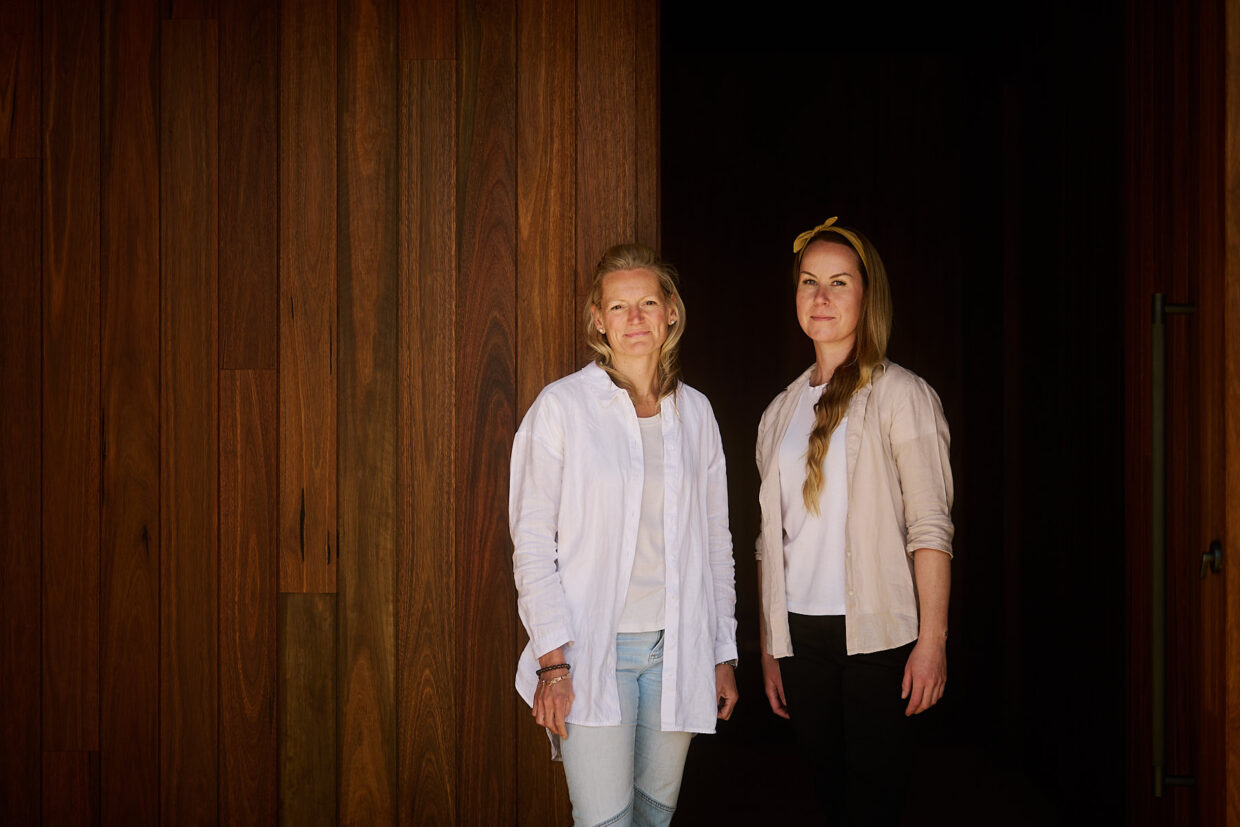It was 15 years in the making, but Barragunda Dining is officially open and offering guests the opportunity to share a dining experience that has a bigger story to tell.
When the doors to Barragunda Dining officially opened at the end of February, it marked the end of one journey and the beginning of an exciting new one.
For Hayley Morris, it was a moment she’d been imagining for about 15 years.
“It actually feels quite momentous because it’s been so long in the making,” she said.
“I’ve never been this close to the whole process from the very start with any of the other hospitality businesses.
“Usually when you have a win in business you go ‘great, that’s really good’ and you move onto the next thing. But with this, to have it open and be able to sit there and actually enjoy the fruits of your labour, it’s really special.”
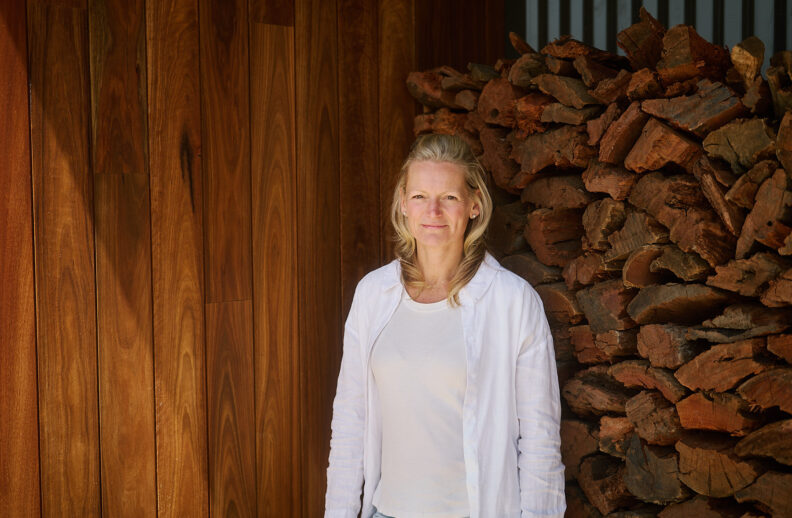
Barragunda Dining is Morris Group’s new 40-seat restaurant set amongst the market garden on the Morris family’s Cape Schanck property, Barragunda Estate.
All profits from the restaurant will be directed back to Morris Family Foundation to support grassroots projects that are working towards innovation and systemic change in Australia’s food systems to advance the shift to regenerative practices.
“It just reinforces to us and to everyone else that this is not just about making money,” Hayley said.
“Of course, we want to make money because if we make money, we can donate it. But it’s part of a bigger story.”
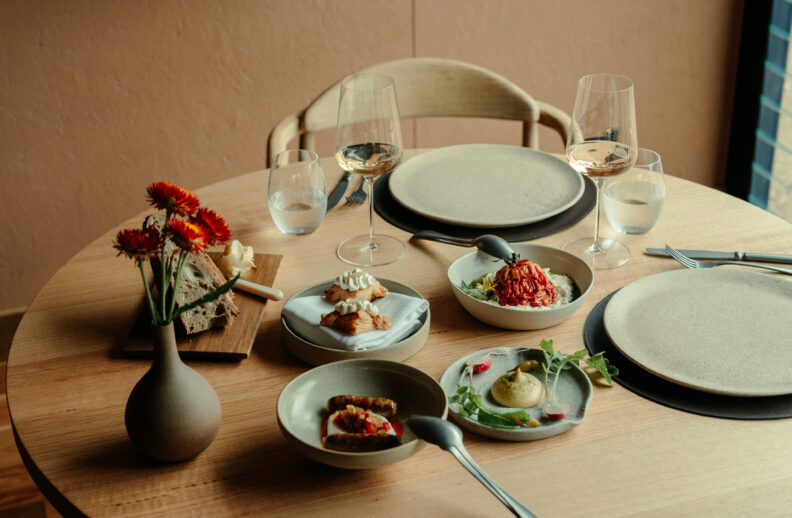
That story has its origins in Hayley’s passion and advocacy for regenerative practices in agriculture.
Over the last decade, the estate has been front and centre in Hayley’s mission to work towards creating a food system model that aims to restore nature, rather than control it.
Barragunda Dining is the next step in telling that important story.
“Right now, around 90 percent of the food in the restaurant comes from the farm. We’ve got cattle, sheep, and the vegetables and an orchard,” Hayley said.
“Everything’s just so fresh and delicious. It’s stuff that’s picked yesterday and prepared this morning. That level of freshness you just don’t see it a lot.
“The vegetables are the hero on the menu for sure, but that will decrease as we go into winter because we’ll be able to grow less.
“But even then, it’ll be heavily regionalised and seasonal. There are a lot of farms in the area that will have some different things that we won’t have.”
The road to opening Barragunda Dining was anything but a smooth one. Hayley says she came up against so many obstacles along the way that she often doubted whether it would ever come to fruition.
“There were many, many, many times that I really wasn’t sure. I don’t think I actually thought it was going to happen until a few months ago,” she said.
“I just kept thinking ‘surely something’s going to stop us now.’”
But ultimately, she persisted. And Hayley says that came down to a few factors. One being her co-collaborator and Barragunda Dining’s Executive Chef and Farmer Simone Watts.
“Simone’s a big part of that because she lives down here. This is her whole life. It’s her full-time. She lives 100 metres from the restaurant,” Hayley said.
“I think between having her driving force, with my love for showcasing regenerative agriculture and wanting to help people reconnect with food just meant that it was worth persisting. There’s a real purpose behind it and I think that’s certainly what drove us.”
It was that shared sense of purpose that initially brought Hayley and Simone together as collaborators.
The two of them met when Simone was working as Head Chef at former Morris Escapes property, Daintree Ecolodge.
Hayley says at the time she’d been looking for ways to hero local, regional and organic food on menus across Morris Group’s venues but was having limited success.
“This kind of knowledge amongst chefs was a lot lower than it is today,” she said.
“Supply was extremely challenging and asking chefs to adapt their menus more regularly was a big change. They had to be really adaptive, and it just wasn’t the way menus were done then.
“But when I met Simone, I just knew she was on the same wavelength and had the same ethos as mine.
“She ended up moving back to Victoria and she came to me and pitched this idea of doing a small-scale restaurant somewhere on the Mornington Peninsula.
“Barragunda Estate already had all the farm infrastructure, all the fencing, the water, the sheds, and the packing rooms. Everything was in place and not really being used. So, it was just this beautiful, perfect opportunity that was ready to get going.”
With the restaurant now open comes the opportunity that Hayley’s been working towards from the very beginning: the opportunity to not only give people an exceptional dining experience, but also to share her passion for creating a food system that’s more in sync with nature.
“I want people to feel healthy and I want people to feel loved. Food is such a great way for people to disarm and be more open,” she said.
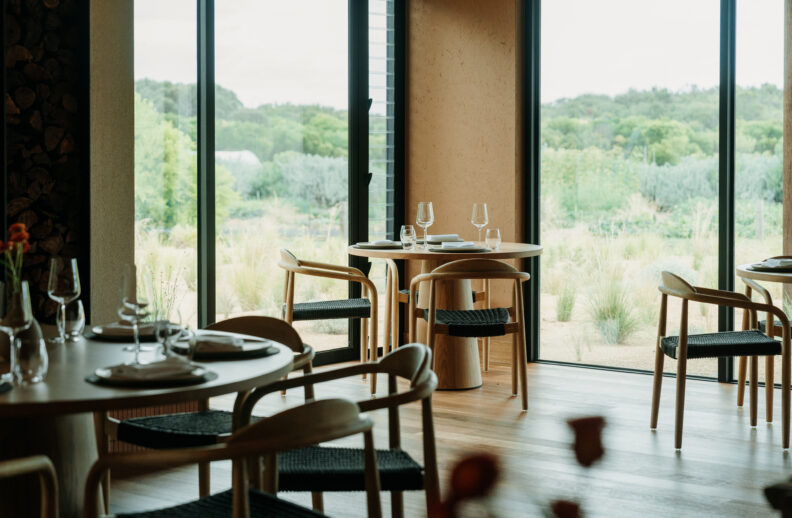
“Being in such an immersive space where you’re seeing that alternative brought to life in this way and learning about it with other people, is such a different way to take in that information.
“For us it’s not just about being awarded the next Chef Hat. It’s really trying to showcase a way of doing things differently.
“Hopefully by seeing what we’re doing, people can start thinking about how they integrate a bit of our philosophy into their own lives, by finding out where they can support a local farmer either at a farmers’ market or through the Barragunda Collective’s box system or something like that.
“I guess for me, ultimately I hope people leave maybe just having contemplated that a little bit more and understand why we’ve done it.”
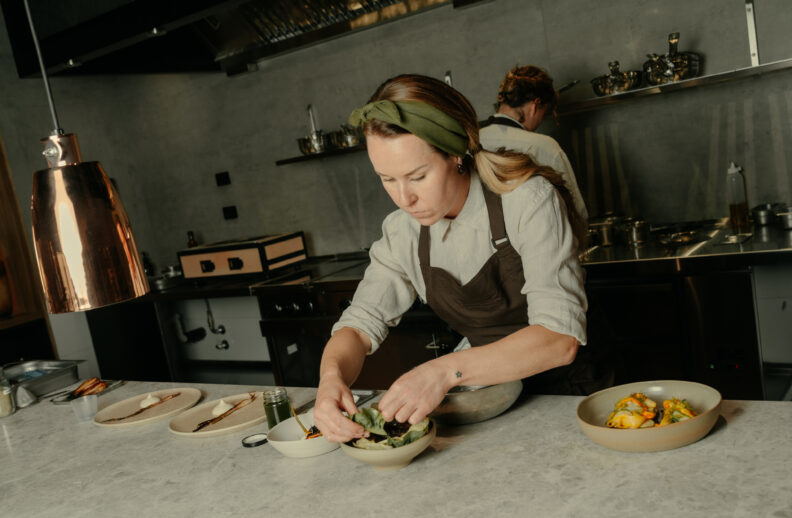
Fast five with Barragunda Dining Executive Chef Simone Watts
1. How does it feel to have Barragunda Dining open to the public?
Every day feels like a dream. I can’t wipe the smile off my face during service and I’m just so happy to see familiar faces coming through the door every day and sharing the celebration.
2. What can diners expect from the menu?
Our menu is a representation of all that is beautiful at Barragunda each week. From what native flora is flowering to the vegetables coming through the market garden and orchard. I base the menu simply on what is available.
3. You had a lot of time to think about how you’d approach the menu over the last few years. How has that evolved over time?
Things really changed for me when I moved to Barragunda. It was one thing to understand general agricultural seasons, but to really know a place and recognise the small daily changes can only happen when you’re here full time with your feet in the soil.
4. How often does the menu change?
The menu changes most days, but never drastically. Mother nature doesn’t work that way so why should chefs? Small simple nuances in dishes change to invite new season flavours. Just today I started slipping fig leaves into the jus because autumn is in the air.
5. Are there any dishes or ingredients that you’re particularly excited about at the moment?
I’m always excited about serving our hogget and advocating for giving lambs a longer time on pasture. It’s better ethically, economically and culinarily (aka more delicious). I wish more producers would follow our lead.
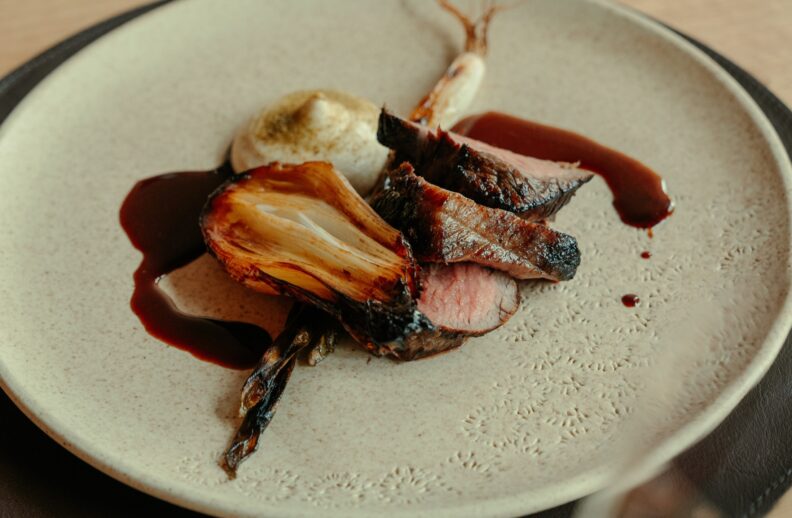
The bigger picture
The origin story of Barragunda Dining is all about showing people a sustainable alternative to our modern, mainstream food system.
It’s an extension of the work done by Hayley Morris and the Morris Family Foundation in supporting grassroots projects that are geared toward innovation and systemic change to help Australia’s agricultural industry shift towards regenerative practices.
It’s an issue Hayley is extremely passionate about, and she explains why we should all care:
“In our mainstream food system there’s huge inequality between who’s selling the food and who’s growing the food. What’s happened over time is the farmer has no say over the price of food, because it’s controlled by the big buyers, which is ultimately the supermarkets,” she said.
“Their focus has been on efficiency, which has led to big mono crops. Rather than farmers having a diverse array of foods, they just focus on one because it means things like their machinery and packing systems can be tailored to suit that one product.
“But what that means is if there’s ever something like a pest that wipes out broccoli, and all this farmer grows is broccoli, then their whole livelihood is gone.
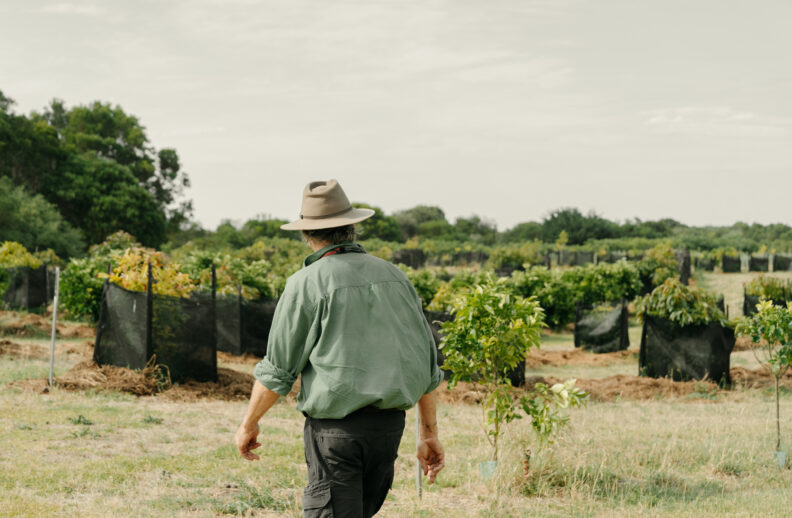
“So, naturally you do everything you can to keep your crops growing which means you’re probably going to spray it a lot.
“As a result, what you end up doing is treating nature like it’s a resource to extract from. You’ll get synthetic and chemical pesticides and fertilisers to add back to the soil. But that means there’s no life left in the soil. Everything that the food’s growing from has been added to it.
“Then when prices go up on those fertilisers and pesticides because they’re made from finite resources, farmers don’t have the control to increase the price of food, so the pressure is on them to just get more efficient and cut their costs, which is never conducive to the environment.
“This has led to a situation where the average return for a farming business is less than a five percent. Some of them are losing money and going further and further into debt. So then you have this horrendous statistic where farmers are 60 percent more likely to take their own lives than any other member of the community.
“And this whole system feeds on itself in a cycle, and we buy into it everyday without even knowing about it.
“So, for us what we’re trying to do is showcase what a localised food system and diverse ecosystem can look like.
“One that builds nature, and supports nature, and brings people and the community back into the picture. It’s a philosophy that’s about respect. What you take, you put back in.
“We’re far from perfect. There’s human intervention in any system that can still destructive even in a small way. But it’s about how to do it and be as light as possible and ensure that we’re looking to regenerate what we’ve taken out.”
Read more about how Morris Family Foundation supports regenerative agriculture projects around Australia.
